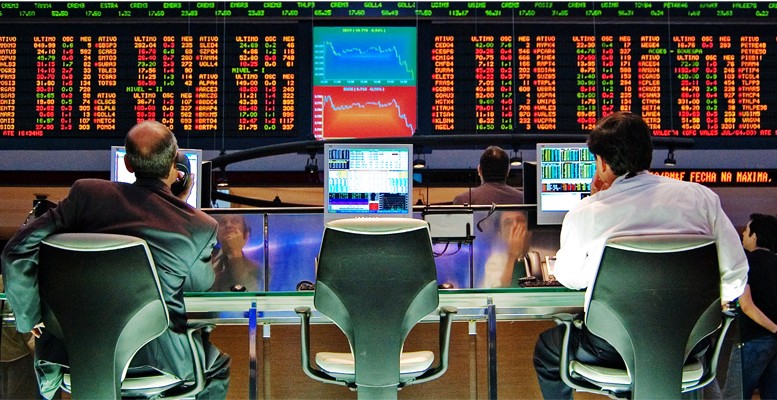Markets’ indicators are showing a lack of any estimation of risk. To begin with, they are at record highs, although some observers say there is still upside potential.
A measure of the lack of any kind of fear is the decline to minimum levels in the volatility index, the VIX (look at the graphic which I took from Jeffrey Frankel ). This shows that, despite the overvaluation, people who have their capital invested in stocks are sleeping well at night. Another indicator which raises suspicions is the risk premium of the markets compared with safe assets, like public bonds. This is calculated by taking away the interest rate on the bond from the inverse of the PER. Here we have a graphic showing the risk premium of the different stock markets which we have just talked about.
What I want to flag is that the more the stock market rises, the lower the risk premium, as it is calculated (the inverse of the PER minus the rate on the bond, with the PER being a level indicator.) Note how excess confidence depresses the premium a lot and when agents over-estimate the risk, the premium shoots up like an arrow. That’s because people flee the markets, madly looking for liquidity. That’s what was very clear in 2007, with very low premiums before the crisis in 2008, when the equity markets’ declines meant they more than doubled. It’s also worth noting that there is no general level. Every stock market has its own level, with the US being the lowest. This fits in well with the fact that it’s the most extensive and deepest market in the world.
In the last few months, we have seen a downward trend in the premium, which means there are less incentives for investing in stocks and shares. Although according to the author whose graph I am using – Miguel Ángel Paz Viruet – the current levels should inspire confidence that there is still some upside potential. I am not so optimistic.
There is also another consideration: interest rates are abnormally low, which could be pushing the risk premium up artificially.
The third indicator I want to talk about is the opinion of one of the most important market operators, value investor Seth Klarman. He has said that in light of the lack of investment opportunities due to the high levels, he is going to give money back to his clients. In a recent letter to investors, Klarman said he is very worried about the situation in the financial markets and has noted that investors seem to be very confident. He also says that asset prices are currently very high.
Investors’ perception of risk is very slight or zero and, as a result, the risks are very high for them. On the other hand, when prices are low, as they were at end-2008 and beginning-2009 when the subprime crisis broke, the real risk is usually fairly low, although the perception of risk may be very high.
Risk evaluation is subjective, but that’s not a problem. The problem is that it’s contagious, everyone watches everyone else and tends to be swept away with the crowd. This is what causes the excessive fluctuations in prices, but it’s inevitable. If you try not to react to what others are doing, you run the risk of being eliminated. We need to take this into account when we read about overvaluation of markets, etc.





